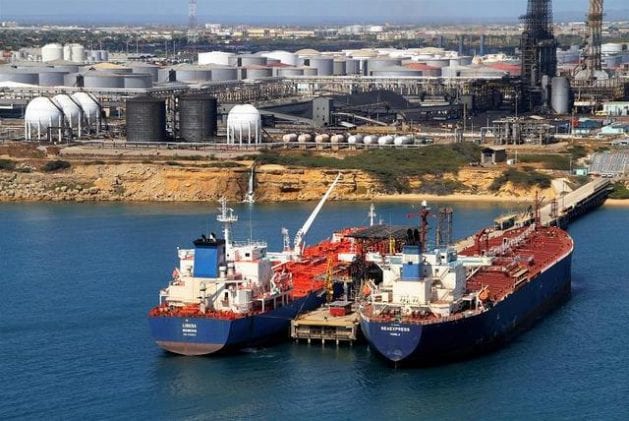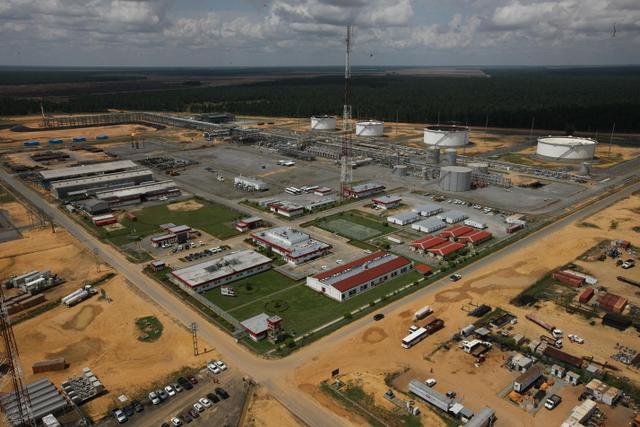Venezuela’s Collapsing Oil Industry
Daily production has fallen by a million barrels in the country with the greatest oil reserves on the planet and where the economy depends heavily on the oil industry.
By Humberto Marquez (IPS)

HAVANA TIMES — Corruption in Venezuela’s state-controlled oil industry, denounced by the government itself and where former ministers and senior managers are behind bars, is the most recent piece of evidence that the country with the greatest oil reserves on the planet, the sector its economy depends upon, is collapsing.
The first drop “is in crude oil production, falling by a million barrels per day,” university professor Luis Oliveros told IPS, as, according to statistics from the Organization of Petroleum Exporting Countries (OPEC), 2,894,000 barrels were being produced per day in December 2013 compared to the 1,837,000 in November this year.
In 2018, production could decrease by another 250,000 barrels per day, at the rate it’s going, and Venezuela, a co-founder of OPEC in 1960, when it was the greatest exporter of crude oil in the world, is becoming an almost insignificant player on the global market, economic expert Oliveros pointed out.
That is in spite of Venezuela possessing the greatest known deposit of hydrocarbon liquids, the Orinoco Belt, which covers a 55,000 km2 area, under which there is estimated to be 1.4 trillion barrels of crude oil, especially heavy crude oil, out of which Venezuela considers 270 billion barrels proven reserves.
Oil is the almost the country’s only export, the source of 95% of its revenue in hard currency, and it represented over 20% of the national GDP in 2015. Most of the oil industry lies in the hands of the state-owned Petroleum of Venezuela Company (PDVSA), which has some ties to multinationals.
President Nicolas Maduro began purging the PDSVA on November 28th, amid a pile of corruption charges and investigations, and he asked the new command, headed by a general who is making his debut in this industry, Manuel Quevedo, that they work to increase production by a million barrels per day.
An immediate goal would be to meet the 2017-2018 quota allocated by the OPEC, which is up to 1,970,000 barrels per day, presidential adviser Ali Rodriguez said.
“In order to maintain current production at 1,850,000 barrels per day (not to mention about increasing it), 4-5 billion USD need to be invested in this industry, and there is evidence that this capital isn’t there,” said Alberto Cisneros, president of the oil consulting company Global Business Consultants.
With its economy strained by 4-digit inflation, exchange control with different exchange rates for a currency that is being devalued further every single day, food, medicine and basic provision shortages and an external debt of over 100 billion USD, Venezuela doesn’t have enough resources to inject into this industry, he told IPS.
In this landscape, oil activity “is further affected by management problems ever since the PDVSA laid off 18,000 employees, half of its personnel, after a strike against the government,” recalled former Energy vice-minister (1999-2002) Victor Poleo.
And corruption became spectacularly visible this December, when the Attorney General sent 67 PDVSA executives and managers to jail for crimes that range from falsifying production figures to embezzlement and attacking national sovereignty.
Two of President Nicolas Maduro’s former Oil ministers (Maduro coming to the helm of power in 2013), Eulogio del Pino and Nelson Martinez, who were also presidents of the PDVSA and its US subsidiary company, Citgo, are included for having damaged debt renegotiations.
Further yet, the Attorney General is carrying out a criminal investigation against Rafael Ramirez, the Oil minister and PDSVA president between 2002-2014, and up until November, the most recent Venezuelan ambassador at the United Nations, for his possible involvement in money laundering activities via a private bank in Andorra.

According to the El País newspaper of Spain, which has requested access to reports that the Andorran judge Canolic Mingorance is working on, those close to Ramirez earned at least 2 billion euros (2.36 billion USD) in illegal commissions between 1999 and 2013.
Under this cloud of corruption charges, inexperience and fraudulent operations, PDVSA suffers serious damage. The State company was created when the oil industry was nationalized in 1975 and which for years boasted about being among the top five oil companies in the world.
Production “is declining due to a lack of investment and maintenance, beginning with the ancient north-western basin in Maracaibo Lake, which isn’t delivering more than 450,000 barrels per day,” Cisneros pointed out. Since 1914, over 13,000 oil wells have been drilled there, and up until the beginning of this century, the lake’s basin produced over a million barrels per day.
The oilfields in the east, which are relatively new, contributed the rest, but the figure of 1.3 million barrels per day extracted from the Orinoco Belt, mentioned by Pino half-way through this year, has been discredited by the criminal investigation.
Venezuelan expert Francisco Monaldi, from Rice University in Texas, highlights the fact that oil exports are already below 1.4 million barrels per day (from 2.5 million at the beginning of the century) and they have sent less than 500,000 barrels per day to the United States in November.
The United States was the most important destination of oil sales for a century when it would receive 1.5 million barrels per day, and it is currently its main source of revenue, as exports to China, which exceed 600,000 barrels per day, are being used to repay its debt.
According to Cisneros, the oil refining business “is maybe even worse”, as Venezuelan distilleries installed to process 1.3 million barrels per day “which were working at 90 or 95% of their capacity a few years ago, are only working a third of that now, 30 or 35 per cent. We aren’t even meeting our own gasoline needs,” so we need to import some, he warned.
Distribution problems to the 1,650 gas stations in this country of 31 million inhabitants and four million vehicles, are added to the drop in the production of gasoline, lubricants and other derivates.
A root cause of this problem lies in the country’s absurd price for gasoline, the cheapest in the world. A liter costs a bolivar, which at an official exchange rate can equal 0.10 USD, but the rate on the black market means it translates at a thousandth of a cent: with one dollar, you can buy 100,000 liters.
The cost of the virtually free gasoline equals around a half million barrels of oil per day in this way is between 12 billion and 15 billion USD per year, which is being footed by the PDVSA.
Furthermore, a problem of “smuggling fuel” to Colombia, Brazil and the Caribbean has arisen, which the State is partially containing with strict controls and rationing that result in shortages and long lines of cars at gas stations on the border.
This year, the PDVSA has made delayed interest payments on its bonds and Sinopec, a Chinese state-owned company (an ally that has given the Venezuelan government credits worth over 50 billion USD) has filed a complaint against the Venezuelan state-controlled company with a US court, because of 21.5 million USD in unmet financial obligations.
Finally, the United States has placed sanctions on Venezuela which are making it difficult for the country and PDVSA to renegotiate the credit it owes.
“Sanctions and the technical default (because of unmet payments) are making it increasingly difficult to find partners to invest in joint companies. The Venezuelan oil industry seems to be entering a death spiral,” Monaldi said.
Cisneros believes that recovering the industry “is possible with another organizational framework, like the Argentinian one, which has a leading company, Enarsa, and an operator, YPF (51% state-owned, 49% listed).”
In order to get there, “there are two possibilities: one is that the current government takes action in both the economic and oil sectors, and the other is that there are a change in politics and the country throws itself into taking full advantage of its human, financial and oil resources,” he concluded.
Official statistics
In consecutive annual reports, the PDVSA presented itself as the fifth leading oil company in the world, after Aramco (Saudi Arabia), NIOC (Iran), CNPC (China) and Exxon (US) grounding this official statement, which it repeated until last November, on the following statistics:
Proven crude oil reserves 302,250,000 barrels Extra heavy crude oil: 261,253,000, heavy 18,217,000, medium 9,538,000, light 10,743,000 others 2,499,000 barrels.
Proven gas reserves 202,698,000 cubic feet.
Crude oil and natural gas liquid production (2016): 2,571,000 barrels per day.
Natural gas production: 7,926,000 million cubic feet per day.
Oil pipelines: 3,055 km.
Oilfields: 4310.
Active rigs: 18,566.
Venezuela’s oil refining capacity: 1,303,000 barrels per day.
Refining capacity abroad (as the owner or partner of refineries in the United States and Europe): 1,188,000 barrels per day.
Exports (2016): 1,818,000 barrels per day of crude oil and 371,000 barrels per day of petroleum products.
Liquid oil sales to the national market: 510,000 barrels per day.
Oil sector workforce: 110,648 people in Venezuela and 4,535 abroad.
Revenue (2016): 48 billion USD. Costs and expenses: 46 billion USD Assets: 87.1 billion USD Financial Debt: 41 billion USD.






That’s what happens when you follow the Cuban template to completely descimate an economy. Can’t blame the Imperialist Yankees for this one. So come on folks, where is the blame to be deflected?